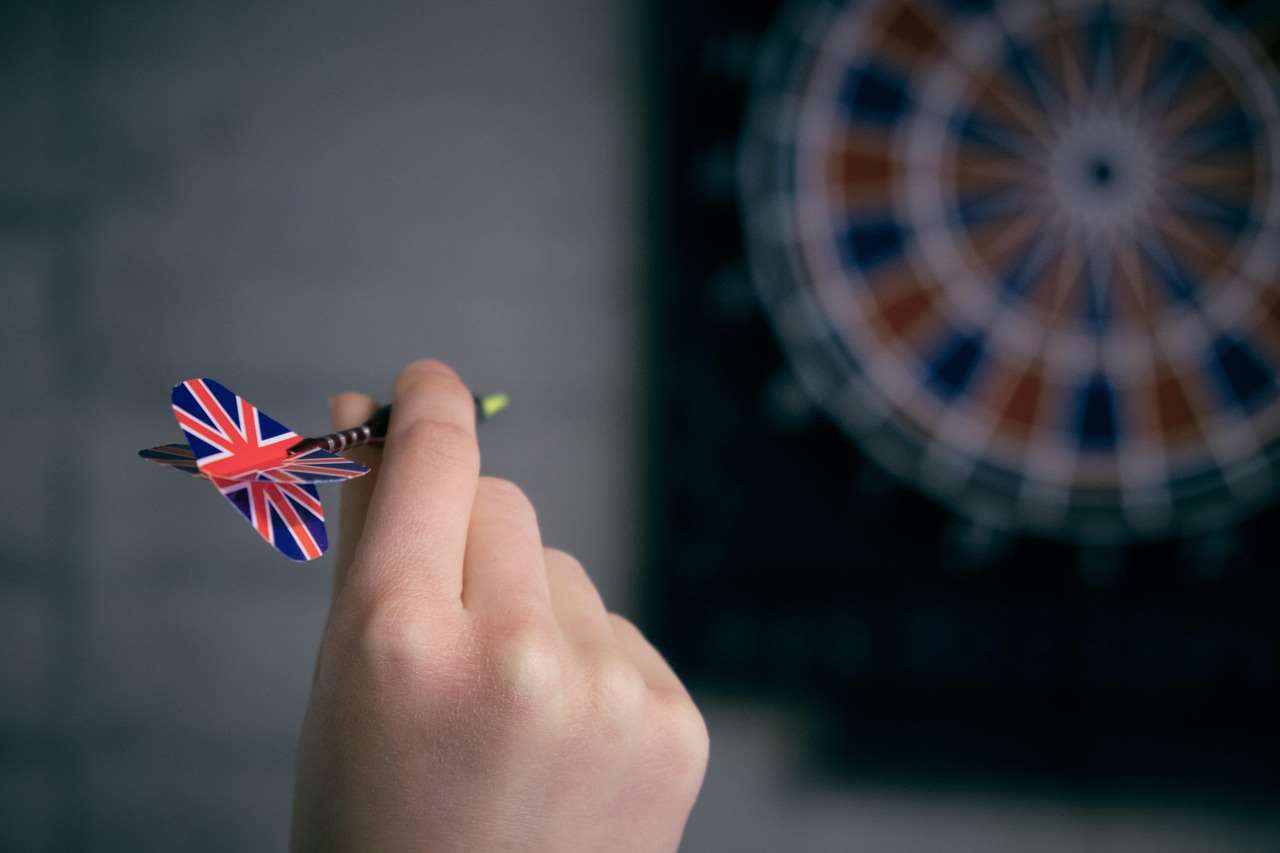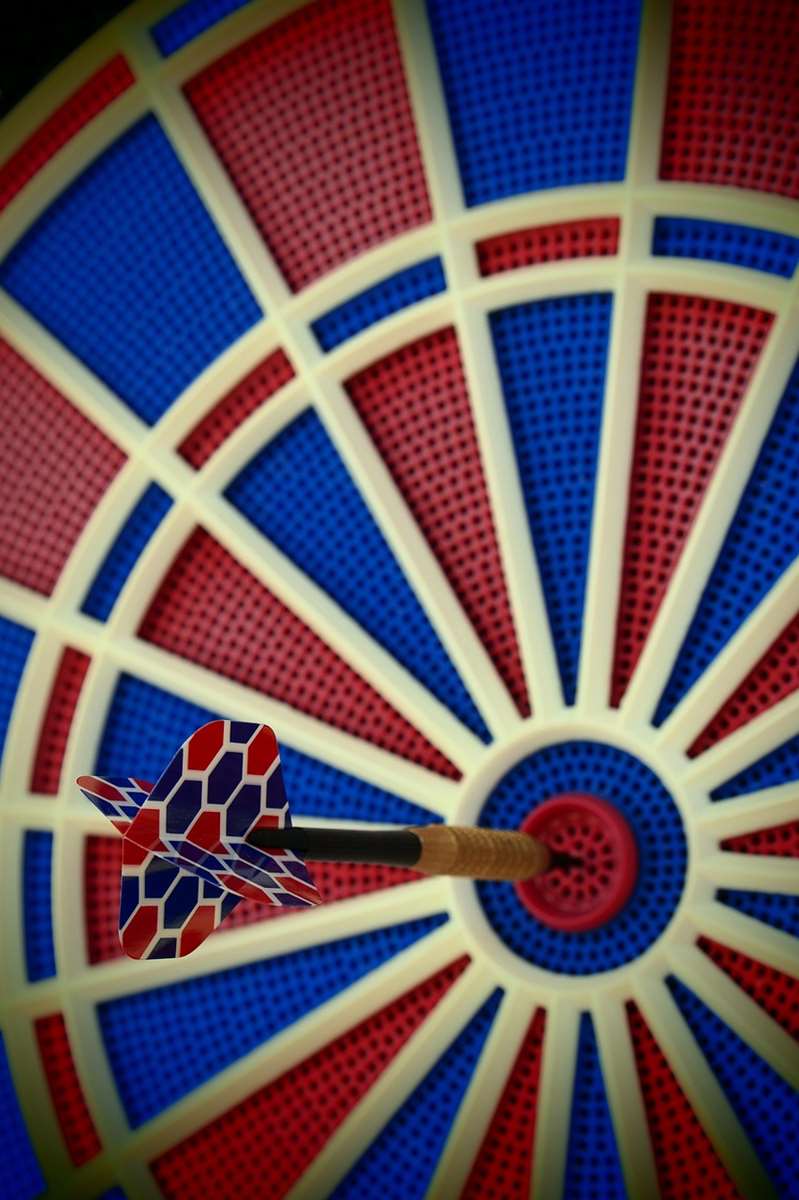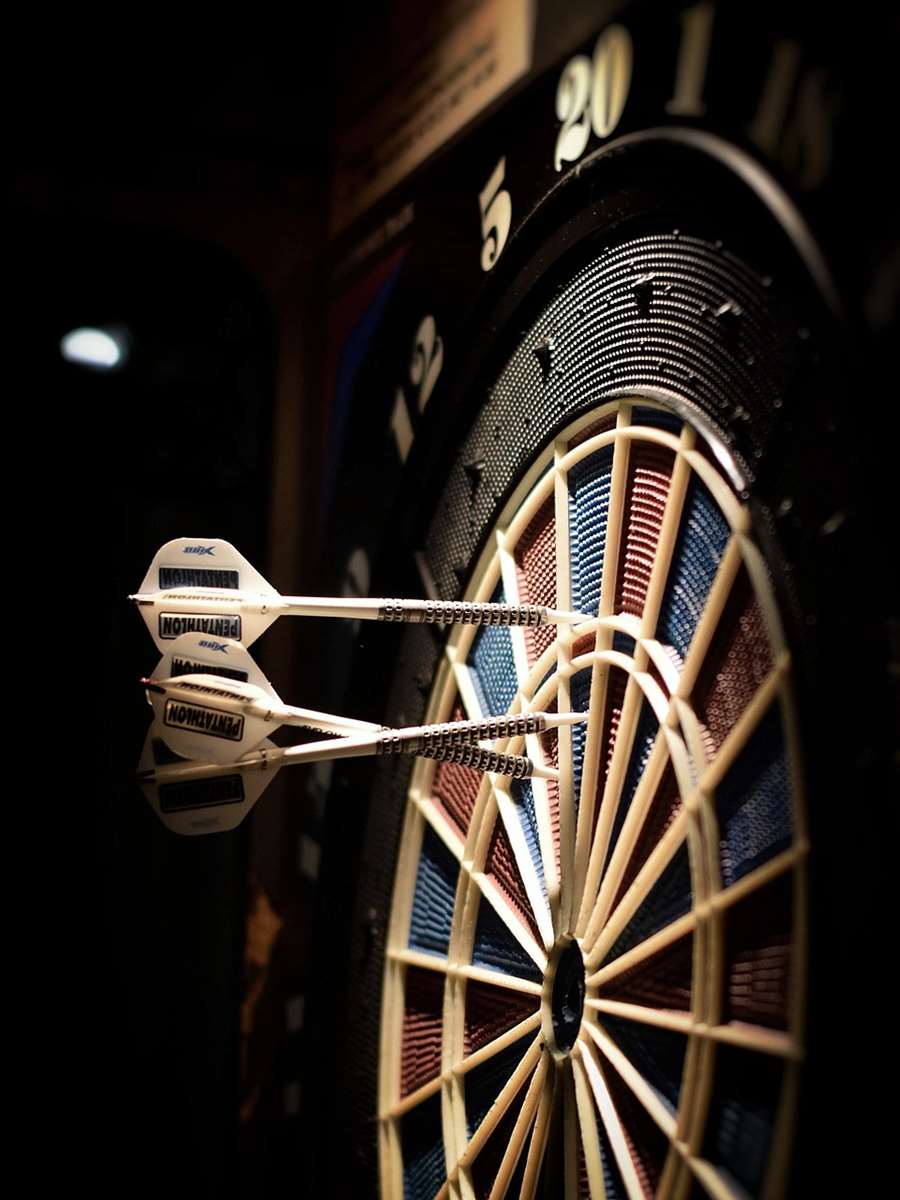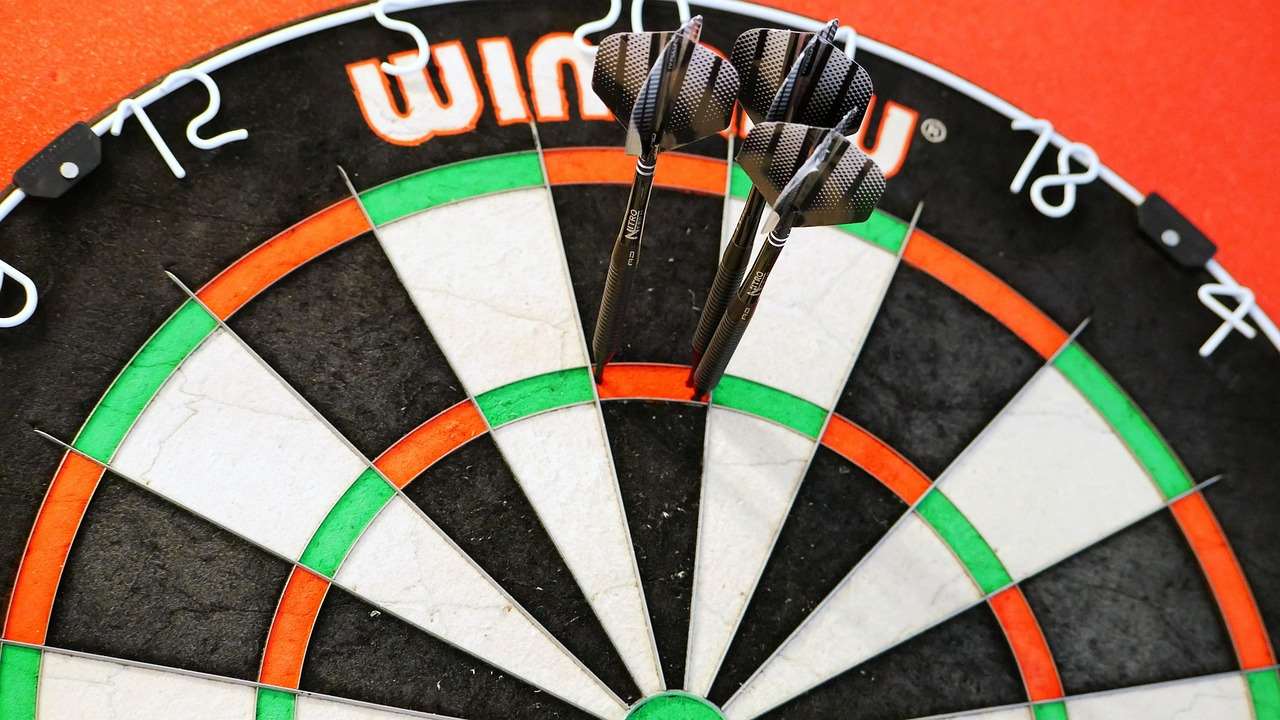Playing pub darts for individuals offers a fantastic way to unwind, improve your focus, and enjoy a bit of friendly competition, even solo. This article will guide you through everything you need to know to get started, from setting up your dartboard to practicing effectively and even joining a local darts league when you’re ready for a bigger challenge.
⚠️ Still Using Pen & Paper (or a Chalkboard)?! ⚠️
Step into the future! The Dart Counter App handles all the scoring, suggests checkouts, and tracks your stats automatically. It's easier than you think!
Try the Smart Dart Counter App FREE!Ready for an upgrade? Click above!
Setting Up Your Personal Darts Space
Creating the right environment is crucial for enjoying pub darts for individuals. You don’t need a dedicated room, but a little preparation goes a long way.
Choosing the Right Location
Select a spot with enough clear space. You’ll need about 8 feet of clear throwing space and at least 5 feet of width. Ensure there are no obstructions like furniture or walkways that could interfere with your throw. Proper lighting is also essential, preferably positioned above and slightly in front of the dartboard to minimize shadows. Consider soundproofing if you plan to practice late at night, especially if you have thin walls.
Dartboard Mounting: Height and Distance
The official height for the center of the bullseye is 5 feet 8 inches (1.73 meters) from the floor. The throwing distance, measured from the front of the dartboard (the flat surface, not the wall) to the oche (throwing line), is 7 feet 9 1/4 inches (2.37 meters). Accurate measurements are crucial for consistent play and adhering to official rules. Use a measuring tape and a level to ensure everything is perfectly aligned. A slightly off-center dartboard can significantly impact your accuracy.
Protecting Your Surroundings
Darts, especially when you’re starting out, can occasionally miss the board. Invest in a dartboard surround, a ring of material (often rubber or cork) that protects your wall from stray darts. Alternatively, you can create a DIY surround using foam board or cork tiles. This small investment can save you a lot of headaches (and wall repairs) in the long run.

Essential Darts Equipment for Solo Play
Having the right equipment is essential to improve your dart throwing skills. Here’s a breakdown of what you’ll need:
Choosing Your Darts
Darts come in various weights and materials. Lighter darts (around 20-22 grams) are generally recommended for beginners as they are easier to control. Steel-tip darts are standard for pub play and board compatibility. Experiment with different barrel shapes (cylindrical, bomb, torpedo) and grip styles (knurled, smooth, ringed) to find what feels most comfortable and provides the best grip for you. A good set of darts can significantly impact your performance. Consider trying out a few different sets at a local darts shop if possible.
Dartboard Types
While bristle dartboards are the standard for steel-tip darts and are self-healing, electronic dartboards can also be a good option, especially for beginners. Electronic boards often feature built-in scoring and various game modes, making solo practice more engaging. However, they typically require soft-tip darts. For the true pub darts experience, stick with a high-quality bristle board. Remember to rotate your dartboard regularly to distribute wear and tear evenly.
Dartboard Maintenance
Regular maintenance will prolong the life of your dartboard. Rotate the board weekly to prevent wear on specific sections, especially the 20 and bullseye. Remove any loose fibers with tweezers or a soft brush. Avoid using liquids to clean your dartboard, as moisture can damage the sisal fibers. Consider using a dartboard cleaner specifically designed for bristle boards.
Practice Drills for Individual Improvement
Consistent practice is key to mastering pub darts for individuals. Here are some effective drills to help you improve your accuracy and consistency:
Around the Clock
This is a classic drill for improving accuracy on individual numbers. Start by aiming for the 1, then the 2, and so on, all the way around the board. Try to hit each number three times before moving on. For a more challenging variation, aim for the doubles or triples of each number. This drill helps develop accuracy and consistency across the entire board.
Checkout Practice
Checkout practice is crucial for competitive play. Start with a specific score (e.g., 40) and practice different checkout combinations. Focus on common checkouts like 40 (double 20), 32 (double 16), and 50 (bullseye). Use a checkout chart to explore various options and develop your strategic thinking. Knowing your outs is essential for winning games.
High Score Attempts
Challenge yourself to achieve the highest possible score in three darts. Focus on hitting the treble 20 as consistently as possible. This drill helps improve your focus and accuracy under pressure. Track your progress and try to beat your personal best each time you practice. Consider keeping a log of your scores to monitor your improvement over time.

Improving Your Throwing Technique
Refining your throwing technique is fundamental for excelling in pub darts for individuals. A consistent and smooth throwing motion is essential for accuracy.
Stance and Posture
Your stance should be comfortable and balanced. Most players stand with one foot slightly in front of the other, angled towards the dartboard. Maintain a consistent posture throughout your throw. Avoid swaying or moving your body excessively. Experiment with different stances to find what feels most natural and stable for you. Small adjustments to your stance can have a significant impact on your accuracy.
Grip and Release
Grip the dart firmly but not too tightly. Use a consistent grip each time you throw. Your release should be smooth and controlled, with a follow-through towards the target. Avoid snatching or jerking the dart during your release. Practice your grip and release repeatedly to develop muscle memory. Watch professional darts players to observe their grip and release techniques.
Follow-Through
A proper follow-through is crucial for accuracy. Extend your arm fully towards the target after releasing the dart. Keep your wrist and fingers relaxed. Avoid stopping your arm abruptly. A smooth follow-through ensures the dart travels in a straight line towards the target. Visualize your follow-through before each throw to improve consistency.
Mental Game and Focus
Mental fortitude plays a significant role in the game of darts. Developing mental focus and managing pressure can significantly improve your performance, even when practicing pub darts for individuals.
Visualization Techniques
Before each throw, visualize the dart hitting your target. Imagine the trajectory of the dart and the feeling of success. Positive visualization can boost your confidence and improve your accuracy. Practice visualization techniques regularly to enhance your mental game. Consider creating a mental image of your ideal throw and focusing on that image before each dart.
Dealing with Pressure
Learn to manage pressure during crucial moments. Take deep breaths to calm your nerves. Focus on your breathing and clear your mind of distractions. Avoid overthinking or getting caught up in the score. Practice under pressure by setting specific goals or challenges for yourself during practice sessions. The atmosphere at live darts matches can be intense, so preparing mentally is crucial.
Maintaining Focus
Maintaining focus throughout a game can be challenging, especially during long practice sessions. Take short breaks to rest your eyes and clear your mind. Avoid distractions such as phones or conversations. Focus on one dart at a time and avoid dwelling on past mistakes. Developing a pre-throw routine can help you maintain focus and consistency.

Joining a Local Darts League
While pub darts for individuals can be a great way to practice, joining a local darts league is an excellent way to test your skills, meet new people, and experience the social aspect of the game.
Finding a League
Check with local pubs or community centers to find a darts league in your area. Many leagues have different skill levels, so you can find one that suits your abilities. Online directories and social media groups can also be helpful in finding local darts leagues. Consider visiting a few different leagues to see which one feels like the best fit for you. The Darts Culture And Community Guide can offer some extra insights.
League Etiquette
Familiarize yourself with the rules and etiquette of the league you join. Be respectful of your opponents and fellow players. Avoid talking or moving during someone else’s throw. Be a gracious winner and a good sport when you lose. Showing respect for the game and your opponents is essential for creating a positive and enjoyable league environment. Experience Attending Live Darts can also give you some insights into proper etiquette.
Benefits of League Play
Joining a darts league offers numerous benefits, including improved skills, social interaction, and friendly competition. Playing against different opponents challenges you to adapt your game and improve your mental toughness. The social aspect of league play can be a great way to meet new friends and build camaraderie. Regular league play can also provide motivation to practice and improve your skills.
Advanced Strategies and Techniques
Once you’ve mastered the basics of pub darts for individuals, you can explore more advanced strategies and techniques to take your game to the next level.
Target Selection
Develop a strategic approach to target selection. Don’t always aim for the treble 20. Consider alternative targets based on your current score and the remaining outs. For example, aiming for the 19 or 18 can be a better option if you need to set up a specific checkout. Practice different target combinations to develop your strategic thinking. Understanding the board layout and the values of different segments is crucial for effective target selection.
Dart Grouping
Focus on grouping your darts together. Aim for the same spot on the board repeatedly to create a tight cluster of darts. Dart grouping is a sign of consistent throwing technique and improved accuracy. Practice grouping your darts on different segments of the board to improve your overall consistency. Analyzing your dart groupings can help you identify areas for improvement in your throwing technique.
Utilizing the Board
Learn to utilize the entire board strategically. Don’t rely solely on the 20 segment. Practice aiming for different areas of the board to develop your versatility. For example, using the 19 segment can be helpful for setting up checkouts on the bullseye or double top. Understanding the different scoring zones and their strategic advantages can significantly improve your game.

Tracking Your Progress
Keeping track of your progress is essential for staying motivated and identifying areas for improvement when practicing pub darts for individuals.
Scorekeeping Methods
Use a consistent scorekeeping method to track your progress. You can use a traditional chalkboard, a whiteboard, or a digital scoring app. Track your scores for each game and calculate your averages. Monitoring your averages over time can provide valuable insights into your overall improvement. Consider tracking other metrics such as your checkout percentage and your accuracy on specific segments of the board.
Analyzing Your Data
Analyze your data to identify areas for improvement. Look for patterns in your scores and identify your strengths and weaknesses. For example, if you consistently struggle with checkout doubles, focus on practicing those areas. Use your data to tailor your practice sessions to address your specific needs. Consider using statistical analysis tools to gain deeper insights into your performance.
Setting Goals
Set realistic and achievable goals for yourself. Start with small, incremental goals and gradually increase the difficulty as you improve. For example, aim to increase your average score by a specific amount each week or month. Setting goals provides motivation and helps you stay focused on your progress. Celebrate your accomplishments along the way to stay motivated and engaged.
Maintaining Enthusiasm and Avoiding Burnout
Even with a passion for pub darts for individuals, it’s important to prevent burnout and keep the enjoyment alive.
Vary Your Practice Routine
Avoid monotony by varying your practice routine. Try different drills, play different game modes, or practice with different darts. Introducing variety into your practice sessions can help keep you engaged and motivated. Consider trying new challenges or setting new goals to keep things interesting. Listen to your body and take breaks when you need them.
Set Realistic Expectations
Avoid setting unrealistic expectations for yourself. Progress in darts takes time and effort. Don’t get discouraged if you don’t see results immediately. Focus on the process and celebrate small victories along the way. Remember that everyone experiences setbacks and plateaus in their progress. The key is to stay persistent and keep learning from your mistakes.
Join a Community
Connect with other darts players online or in person. Sharing your experiences and learning from others can help you stay motivated and inspired. Join online forums, attend local darts events, or participate in online leagues. Connecting with a community of like-minded individuals can provide support, encouragement, and valuable insights into the game.

Remember to check out the Travel Tips For Darts Tournaments.
Conclusion
Mastering pub darts for individuals is a rewarding journey that combines skill, strategy, and mental fortitude. By setting up a dedicated practice space, refining your technique, and engaging in focused practice, you can significantly improve your game. Remember to stay consistent, track your progress, and most importantly, have fun! Now, grab your darts, step up to the oche, and start your journey to becoming a darts champion. Join your local darts community to share your passion.
Hi, I’m Dieter, and I created Dartcounter (Dartcounterapp.com). My motivation wasn’t being a darts expert – quite the opposite! When I first started playing, I loved the game but found keeping accurate scores and tracking stats difficult and distracting.
I figured I couldn’t be the only one struggling with this. So, I decided to build a solution: an easy-to-use application that everyone, no matter their experience level, could use to manage scoring effortlessly.
My goal for Dartcounter was simple: let the app handle the numbers – the scoring, the averages, the stats, even checkout suggestions – so players could focus purely on their throw and enjoying the game. It began as a way to solve my own beginner’s problem, and I’m thrilled it has grown into a helpful tool for the wider darts community.